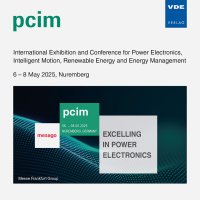Practical Considerations for Pulsating Heat Pipe and Embedded Heat Pipe Heat Spreaders
Conference: PCIM Conference 2025 - International Exhibition and Conference for Power Electronics, Intelligent Motion, Renewable Energy and Energy Management
05/06/2025 - 05/08/2025 at Nürnberg, Germany
doi:10.30420/566541073
Proceedings: PCIM Conference 2025
Pages: 6Language: englishTyp: PDF
Authors:
Van Velson, Nathan; Hota, SaiKiran; Hoeschele, Greg; Rokkam, Srujan
Abstract:
Increasing heat loads in power electronics and embedded computing applications require improved thermal management strategies. Embedded heat pipes and pulsating heat pipes (PHPs) are both passive two-phase technologies used for enhancing the thermal conductance of electronics heat spreaders. While conventional heat pipes are a mature technology, PHPs are an emerging technology that has demonstrated benefits in some thermal management applications. Here, operating principles, theoretical performance limits, and manufacturing considerations of both technologies are considered. Recent experimental results for a PHP with ammonia working fluid are presented. A 3U form factor conduction card with embedded PHP channels was tested over a range of sink temperatures (-10deg C to 30deg C) and fluid fill factors (50%, 64%, and 75%), at applied heat fluxes of up to 52 W/cm2. At the optimum fill ratio of 64%, a 50% reduction in thermal resistance was observed.


